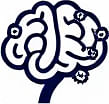The Essentials of Mind Mapping for Better Thinking
 by Shanie Goodwin
by Shanie Goodwin
Mind mapping serves as a dynamic tool for organizing thoughts and boosting creativity. This article covers its core principles, applications in daily life, and ways it enhances learning and problem-solving, making it invaluable for professionals and learners alike.

Mind mapping stands out as a visual technique that helps individuals organize information effectively. By creating diagrams with a central idea and branching out to related concepts, people can represent thoughts in a structured yet flexible way.
One key aspect of mind mapping involves its roots in cognitive processes. This method draws from how the brain naturally connects ideas, allowing for improved retention and recall. For instance, mind mapping can transform abstract concepts into tangible visuals.
In practice, many turn to this approach for enhancing creativity. Artists and writers often use it to brainstorm new projects, linking themes and sub-themes in a non-linear fashion. Such applications highlight its role in cognitive development, where building mental frameworks becomes easier.
To get started, begin with a central node on a blank page. This could represent the main topic, like a business project. From there, draw lines to subtopics, adding details as needed. This process encourages exploration without overwhelming the user.
Business professionals find mind mapping particularly useful for strategy sessions. It aids in breaking down complex problems into manageable parts, fostering collaboration during meetings. For example, teams might map out market trends and responses in real time.
The technique also intersects with psychology, where it supports memory enhancement. Studies show that visual aids like these can strengthen neural pathways, making information more accessible over time. Psychology experts note that this visual organization reduces cognitive load.
Consider a scenario in education: students preparing for exams use mind mapping to review subjects. By connecting key facts and theories visually, they create personalized study guides that promote deeper engagement. This method proves especially beneficial for lifelong learners seeking efficient ways to absorb new material.
Benefits in Daily Life
Mind mapping offers several advantages that extend beyond professional settings. It can simplify personal goal setting, where individuals outline objectives and steps in a clear diagram. This visual clarity helps track progress and adjust plans as circumstances change.
In terms of productivity, incorporating mind mapping into routines can streamline decision-making. Rather than jotting down linear lists, this technique allows for a more holistic view of tasks, revealing interconnections that might otherwise be overlooked.
For those interested in self-improvement, regular use of mind mapping can foster innovative thinking. It encourages diverging from traditional paths, leading to fresh insights and solutions.
Practical Tips for Effective Use
When creating a mind map, choose colors and images to differentiate sections, making the diagram more engaging and memorable. Start simple to avoid initial frustration, then build complexity as comfort grows.
Tools like paper and pens or digital apps provide options for customization. Digital versions offer features such as easy editing and sharing, which are ideal for group work.
In business contexts, mind mapping supports project management by visualizing timelines and dependencies. This helps teams identify potential bottlenecks early, ensuring smoother execution.
From a psychological standpoint, this practice can aid in emotional regulation. By mapping out stressors and responses, individuals gain perspective on their mental states, promoting better coping strategies.
Real-World Applications
Many successful figures in various fields attribute part of their achievements to similar techniques. Entrepreneurs use it to ideate product developments, while educators employ it to design curricula that resonate with students.
In cognitive development, children benefit from mind mapping in early learning environments. It helps them build foundational skills in organization and critical thinking, setting the stage for advanced studies.
Business strategies often rely on this tool for competitive analysis. By mapping out competitor strengths and weaknesses, companies can devise targeted approaches to gain an edge.
Overall, the adaptability of mind mapping makes it a versatile asset. Whether applied in personal reflection or team brainstorming, it consistently delivers value.
Integrating with Other Mental Models
Mind mapping pairs well with other thinking frameworks. For example, combining it with categorization techniques can enhance analysis in research projects. This integration allows for a more comprehensive approach to problem-solving.
In psychology, using it alongside reflection exercises can deepen self-awareness. Individuals might map out daily experiences to identify patterns and growth opportunities.
For business strategies, it complements data interpretation by providing a visual layer to numerical insights. This makes abstract data more relatable and actionable.
As with any skill, consistent practice is key to mastery. Over time, users report increased efficiency and creativity, underscoring its long-term benefits.
In conclusion, mind mapping remains an accessible and powerful method for enhancing thought processes. Its ability to clarify ideas and stimulate innovation positions it as an essential tool for anyone committed to personal and professional growth.
